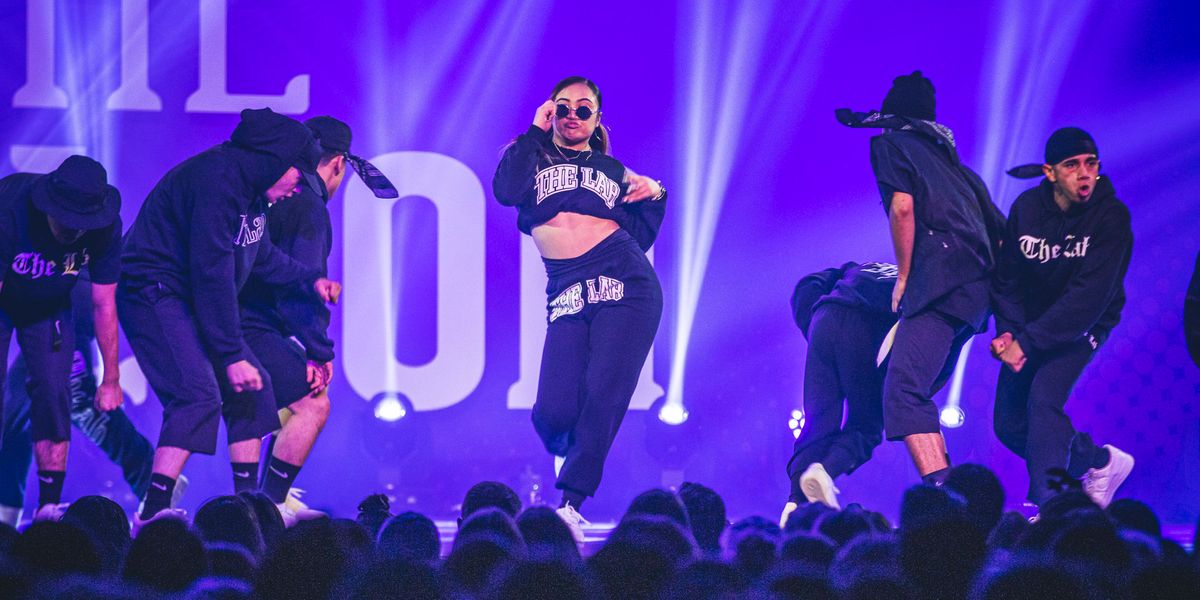Meet Sienna Lalau, Choreographer for K-Pop Superstars BTS
“Dionysus” by superstar boy group BTS arguably boasts some of the band’s most intense choreography. Performance and dance practice videos have garnered millions of YouTube views. The hit’s dynamic, yet sinuous movement is the brainchild not of an industry veteran, but of 19-year-old phenom Sienna Lalau, a K-pop-fan-turned-celebrity-choreographer.
Lalau gained national recognition through her work with creative arts studio The Lab’s junior dance team of 8- to 16-year-olds on “World of Dance.” But “Dionysus”—created in collaboration with fellow Lab member Andrew Elam—endeared her to one of the most passionate global fan bases in pop music: the BTS ARMY.
With a resumé that also features choreographing for long-established icons such as Jennifer Lopez and Ciara, Lalau is poised to skyrocket.
Dance Magazine spoke to Lalau about her meteoric rise, including how she overcomes obstacles, what inspires her and what it’s like to work in K-pop.
Can you talk about the evolution of your creative process?
I started dancing when I was 3 or 4 years old, and started choreographing when I was 10. When I began to create moves to different songs, it felt so good, and I loved watching other people get to vibe out and feel good.
When I first moved to L.A. from Hawaii at age 16, my mom and I were struggling to pay our rent, even to pay for groceries. My directors at The Lab were like, “Don’t worry. Your time’s coming.”
A couple of months later, I had a video that went viral, and my directors kept pushing for me to do so many things to build my portfolio. From there, I started traveling, and then teaching the kids at The Lab for “World of Dance” and going on to work with different music artists.
You’ve been heavily involved in both creation and performance, but seem especially drawn toward creation; what do these aspects of dance mean for you?
I have so much to share, and I’m the type of person who bottles a lot of my feelings inside. Dance is the one thing that makes me feel like I can just release it all.
When I’m on stage and performing, I really am this whole other person. I feel strong and independent, like I’m on top of the world and I can do anything.
You’ve recently done more work in K-pop, specifically with BTS. How do you choreograph for a group with such a high level of visibility and diversity in style of movement?
I have listened to K-pop since I was in middle school [laughs]. I would sing every song even when I didn’t know the lyrics; I would do every dance. I think the fact that I was introduced to it early in my life made it a lot easier to choreograph for K-pop groups, because I had seen so many videos of them performing. I would be like, “Oh, so that’s how they highlight one person; that’s how they create a visual with the backup dancers around the whole group.” And I would fangirl at home. [laughs]
“Dionysus” had so many moving props and drops, and the boys—BTS—were doing a lot of hard moves; they would even drop to the floor on their hands. Some of the fans commented on my social media to make sure BTS would be safe. Their fans are so loving.
I think the diversity in BTS’ style and approach to the movement I give them is so inspiring. Sometimes they’ll do a move that I gave them, but they’ll do it another way, and I’m like, “Oh my gosh, that’s still really cool.” I never saw the move that way, but they made it look really good.
I went to BTS’ concert in 2018 just to watch, because I was a fan already. Going from that to getting to choreograph for them—and then performing with them at the Rose Bowl concert—was so crazy.
K-pop is going to take over the world. It’s already taking over the world. I hope that I never stop choreographing for K-pop because I love it so much [laughs].
What are some of the unique aspects of working on K-pop projects?
Something I love about K-pop is that a lot of the more recognizable artists are groups. I come from a huge family, and I’ve always been surrounded by a lot of people at dance studios, so I love that there’s a family aspect.
Also, they don’t need us to travel to Korea to choreograph for them; we can send videos and suggestions.
How do you handle the language barrier?
Dance is a language that we all know how to speak. When I teach overseas, even if they don’t know what I’m saying when I try to explain something, if I do the move once, they’ll know what I’m talking about. That’s the number one thing that I love when I travel.
What are your long-term goals?
To have a stable career and life in dance. I feel like I was born to dance. Even in moments where I feel exhausted and I don’t want to go to the studio, I’ll freestyle in my room; I’ll just listen to music or sit in a chair and groove my body out.
Another long-term goal is to keep creating connections through dance. I know dance is not something that’s meant to be kept to myself.
I put my faith in whatever God is planning for me. Right now, it’s just to make sure I’m doing my job of inspiring others through dance.




